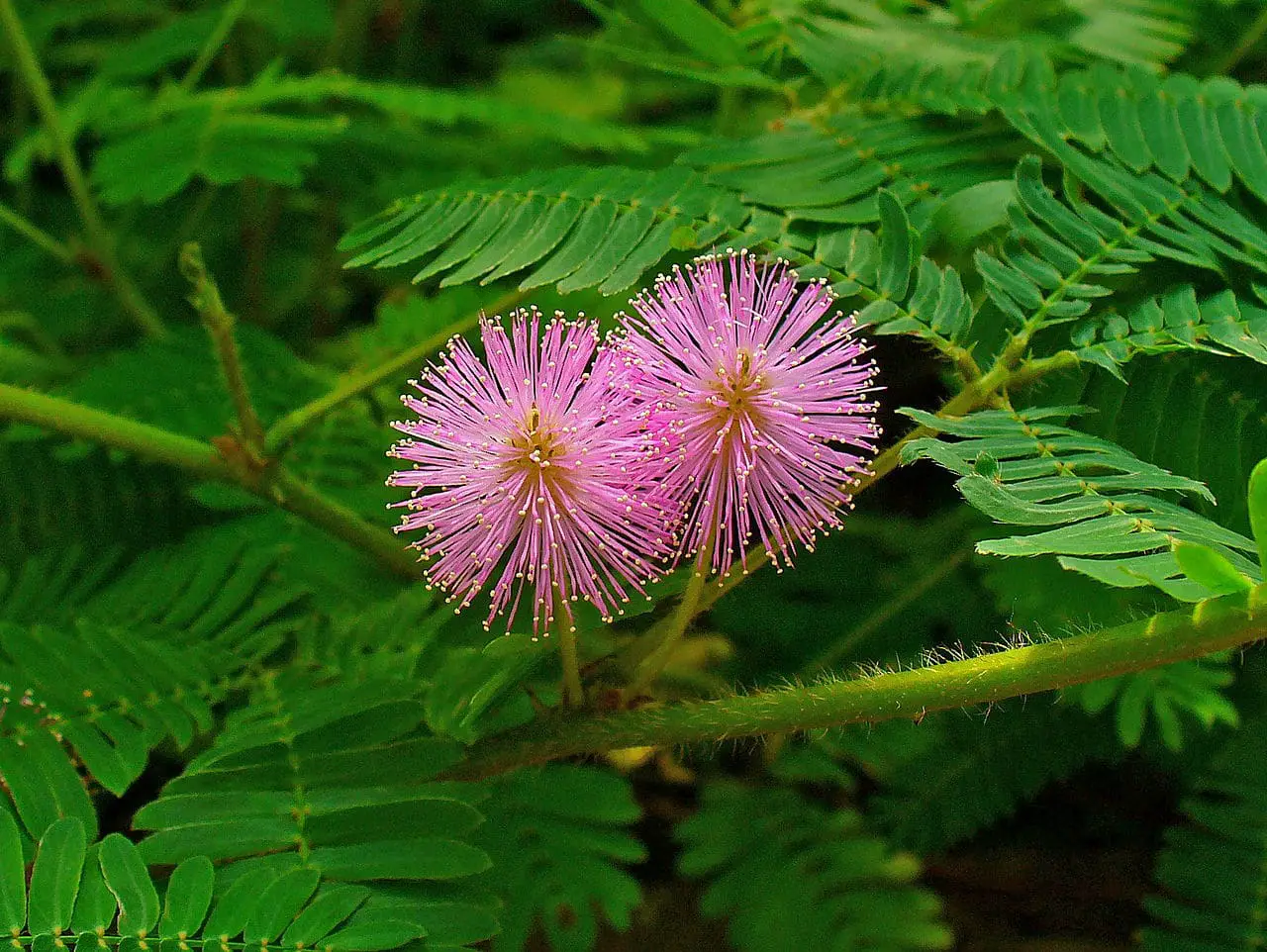
Image – Wikimedia / H. Zell
Surely it has ever happened to you that, walking quietly through a nursery, your hand has brushed against some very interesting plant: the Mimosa chaste. This curious plant species is the clear example that plants also move, and some, like it, do it so fast that they attract our attention.
But how do you take care of it? Discover everything your Mimosa needs to be splendid.
Origin and characteristics of Mimosa chaste
The Mimosa chaste It is native to tropical America, where it grows on the roadsides. In some areas it has even been considered invasive, since has a very high germination rate and a fairly fast growth ratewhich prevents other plant species from growing. It is popularly known as sensitive mimosa, nometoques, roost, poppy (not to be confused with Papaver somniferum), sleepy or moriviví.
It is also a herbaceous perennial, but in temperate-cold regions it is grown as an annual because is very sensitive to cold (temperatures below 10ºC can seriously affect it), although it can also be kept as an indoor plant in a room where there is a lot of light.
As it has a rather reduced height -no more than 100cm-, it can be potted. This, in addition, will make it easier for you to have to move it if you want to change its location. It blooms during spring and summer, producing little pink, miniature ballerina pom-pom-like flowers with a diameter of about two centimeters. The seeds are rounded, less than 0,5cm, and brown.
Their life expectancy is about 5 years, less if the weather is not good (that is, if it is cold).
What is the mimosa movement called?

Image – Wikimedia Commons / Pancrat
If for something the sensitive mimosa It is because of the movement that their leaves make when they touch. This movement is known as present dayand is caused by changes in turgor in the cells at the base of their petiole. When this turgor occurs in the flexor cells, the leaves will open, but if it occurs in the extensor cells, they will close.
Closing or opening the blades requires considerable energy expenditure, so there is no need to play with it.
What are the care of the sensitive mimosa?
If you dare to have a copy, we recommend that you provide it with the following care:
Location
It is a plant that needs a lot of light to grow, therefore…:
- Interior: It will be fine if it is kept in a bright room and away from drafts.
- Outdoor: the ideal would be to have it in full sun, but if it cannot be, then you should know that it adapts reasonably well in exposures with partial shade or semi-shade.
Irrigation
Moderate to frequent. During hot and dry summers it may be necessary to water an average of 3 times a week, but the rest of the year one or two weekly waterings will suffice.
If you have doubts, check the humidity of the soil before proceeding to re-moisten it, as puddling and excess moisture damage its roots.
Earth

- Flower pot: fill with mulch, coconut fiber, or if you prefer, with a mixture of universal substrate with perlite in equal parts. The container must have holes in its base through which the water can escape.
- the garden: it is not very demanding, but it likes soils rich in organic matter, and well drained.
Subscriber
It is interesting to fertilize the sensitive mimosa plant with a liquid organic fertilizer, such as guano, following the instructions specified on the packaging. from spring to summer. In this way, you will get it to grow healthy, have excellent development and, in addition, have a better chance of surviving cold winters (as long as it is protected from frost).
Multiplication

Image – Wikimedia Commons / Forest & Kim Starr
As we said, it is one of the ornamental herbaceous plants that has the least difficulty to germinate, and one of the least needed to do so. The most suitable time for sowing is springbut you can also do it in summer. Thus, you need an envelope of seeds – for sale in nurseries or in agricultural stores -, a seedbed and black peat with perlite.
Next, you just have to fill the seedbed, place the seeds on the surface and cover them with a thin layer of substrate. Keep the peat slightly moist and in 2 months you can have your own little plants of Mimosa chaste.
Easy right?
Pruning
Don’t need itAlthough if you see that it has some stems with dry leaves, remove them with previously disinfected scissors. You can also cut off the withered flowers from your poppy Whenever necessary.
Planting or transplanting time
In springWhen the minimum temperature is at least 15 degrees Celsius, it will be a good time to plant it in the garden.
If you have it in a pot, transplant it when you see the roots come out of the drainage holes, or if it has already occupied the entire container.
Rusticity
Does not resist the cold. The minimum temperature that it holds is 10 degrees Celsius. Therefore, if your area falls more, protect it at home or in a greenhouse until spring returns.
This plant turns out to be perfect to have on balconies, patios, terraces … As a table plant, for example, it can be very original and decorative.

. Mimosa chaste?

